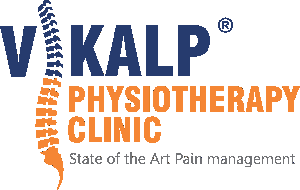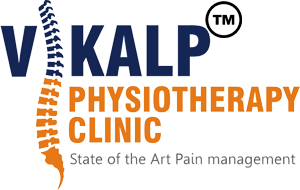Knee Pain Treatment
Clinic provide specilised management for Miniscal tear, Partial ACL/PCL tear, Chronic synovitis, Oesteoarthiritis of knee, Colleteral ligament injury of MCL/LCL, petelar and quadricep tendinitis, Petello-femoral joint dysfunction, Chondromalacia patellae, Total rehab. of TKR (Total knee replacement), PETELLO-FEMORAL JOINT PAIN. As the knee flexes and extends the patella (aka, the knee cap) slides along a groove formed in the distal end of the femer (aka, the thigh bone). If the knee cap rubs too hard, or if it is aligned improperly such that it tracks Asymetrically within this groove, the cartilage on the undersurface of the knee cap can become irritated, leading to pain on the front of the knee.
In our experience almost every case of patello-femoral pain syndrome is related to a biomechanical problem in the lower extremity that is creating excessive strain on the knee cap. When this is the case these issues must be addressed to fully resolve the problem (see discussion below).
Recommendation: Do not minimize any discomfort.
Signs and Symptoms of Patellofemoral Pain Syndrome?
Pain on the front of the knee, under the knee cap, and sometimes on the sides of the knee. Pain is often aggravated by prolonged sitting and climbing down stairs. Clicking or grinding may be felt when bending the knee. In some cases the knee may give way with weight bearing (due to pain inhibition of the quadriceps)
What Causes Patellofemoral Pain Syndrome?
Patellofemoral Pain Syndrome is an example of a repetitive strain injury. Unlike a traumatic injury with is caused abruptly following a trauma or accident, repetitive strain injuries (referred to as a RSI for short) are associated with very small amounts of tissue stress and damage that, if not addressed, can accumulate slowly over time and lead to pain.
As the muscles, ligaments, and tendons around the knee are stressed and over-used it can lead to small scale damage. This damage is referred to as ‘micro-trauma. Although only small this damage still needs to be repaired. The body does this by forming new tissue in and around the injured tissue. This new tissue, often referred to as scar tissue or soft tissue adhesions, is very sticky and acts to ‘glue’ the damaged tissues back together. For an analogy, think of a big rubber band with a pin prick in it. This pin-prick does not affect the rubber band much, but we still want to repair it so we put a little dab of glue over the area.
If the overload at the knee continues (this is almost always associated with problems at the hip or foot, which will be discussed below) there will be ongoing micro-trauma and subsequent repair of this micro-trauma. Overtime, this scar tissue will build up and will start to interfere with the normal strength and flexibility of the muscles. Going back to our analogy, think of this as more and more pin pricks in that rubber band, followed by a big build up of glue around the area. This will in turn make the rubber band stiffer and weaker. As scar tissue builds-up in the muscles the muscles cannot move and protect the knee as well. At this point pain and tightness at the knee and surrounding area will start to become noticeable.
Here’s how this works….
Why the hip and foot are important with Patellofemoral Pain Syndrome
It is important to realize that virtually every RSI involve the knee – including patellofemoral pain syndrome – is related to a problem at the hip, pelvis, and/or foot. If these key joints are not working properly it will create excessive stress and overload at the knee. This will often be seen as a misalignment of the knee during activities such as walking, running, climbing stairs, or with exercises at the gym. (“Do you want to know if you knee pain is linked to a problem at your hip or foot – try squat test, 1 leg squat test, and a lunge test). This altered alignment will increase the demand on the muscles of the leg as they must work harder to move and protect the knee, and try to pull the knee back into the proper alignment. Based on our experice in treating knee pain, hip and/or foot problems actually occur in about 90% of non-traumatic knee problems. If these issues are not resolved the knee pain will not fully resolve, and will likely come back in the future.
Treatment of Knee Pain
– Resolving Patellofemoral Pain Syndrome
The proper treatment of patellofemoral pain syndrome must not only address pain and tissue damage at the knee itself, but MUST correct the biomechanical problems at the foot and/or hip and pelvis.
For treatment to be effective there are certain steps that must be followed, and these steps must be performed in the right order if we are to expect the right results. Here is our approach when treating patellofemoral pain syndrome in our clinic….
Low level laser light (LLLT) stimulates growth and healing of the tissues reduces inflammation and oedema. Cold laser…
Posted by Vikalp Physiotherapy Clinic on Friday, January 30, 2015
Step 1 – Resolve scar tissue adhesions and facilitate healing
Perhaps the most critical most critical step is to treat the scar tissue adhesions. These adhesions are a sign that the muscles are not healthy, and unhealthy tissue will not respond as well to traditional stretches and exercises – think of trying to stretch out that rubber band caked with glue. Resolving scar tissue adhesions is a critical step in resolving knee pain, including patellofemoral pain syndrome, but it is often a missed or underappreciated step as many practitioners do not have the clinical skills to address this problem.
Scar tissue adhesions do not resolve with stretching or traditional massage or soft tissue methods, but instead must be treated with specialized techniques. One of the most effective methods is to use a technique known as Active Release Techniques (ART). For those who are unfamiliar with this treatment method, ART is a new and highly successful hands-on treatment method that was specifically designed to identify and address scar tissue adhesions that are interfering with the normal movement of the body.
During an ART treatment the practitioner will first shorten the muscle, tendon, ligament, or joint capsule and then apply a very specific tension with their hands as they stretch and lengthen the tissues. As the tissue lengthens the practitioner is able to assess the texture and tension of the tissue to determine if the tissue is healthy or contains scar tissue that needs further treatment. When scar tissue adhesions are felt the amount and direction of tension can be modified to treat the problematic area (click here for more information on ART treatment).
Step 2 – Correct strength and flexibility
Simply treating the scar tissue adhesions will make the damaged tissue healthier, and will often result in a significant reduction in pain. In fact, it is not uncommon to see a significant improvement in just a few visits. However, although addressing the scar tissue makes the muscles healthier, they may still be somewhat tight or weak. When this is the case specific stretches or exercises can be incorporated into a home exercise/rehabilitation routine to help support in office care. Initially the focus is on correcting local muscle deficiencies (i.e., at the knee, hip, or foot).
Step 3 – Re-Train Functional Movement Patterns
The final stage with treatment is to ensure proper alignment and movement coordination of the foot, knee, hip, and trunk with functional movement patterns. This ensures movement of the hip, knee, and foot are coordinated and working together as a unit. This is what is required during real life activities such as running, walking, cycling, and climbing stairs (the key functional movement patterns with respect to patellofemoral pain syndrome include the squat, 1 leg squat, and lunge).
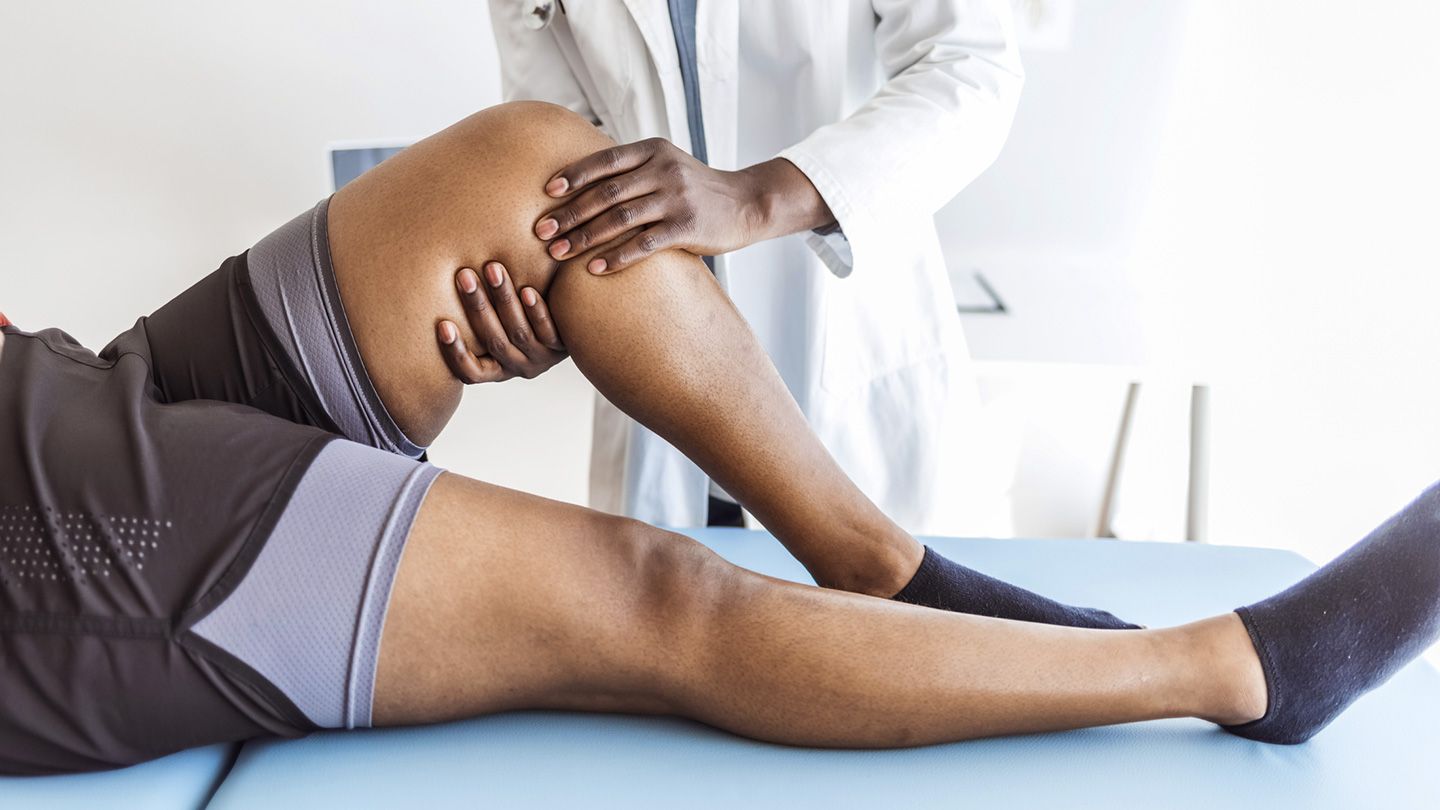
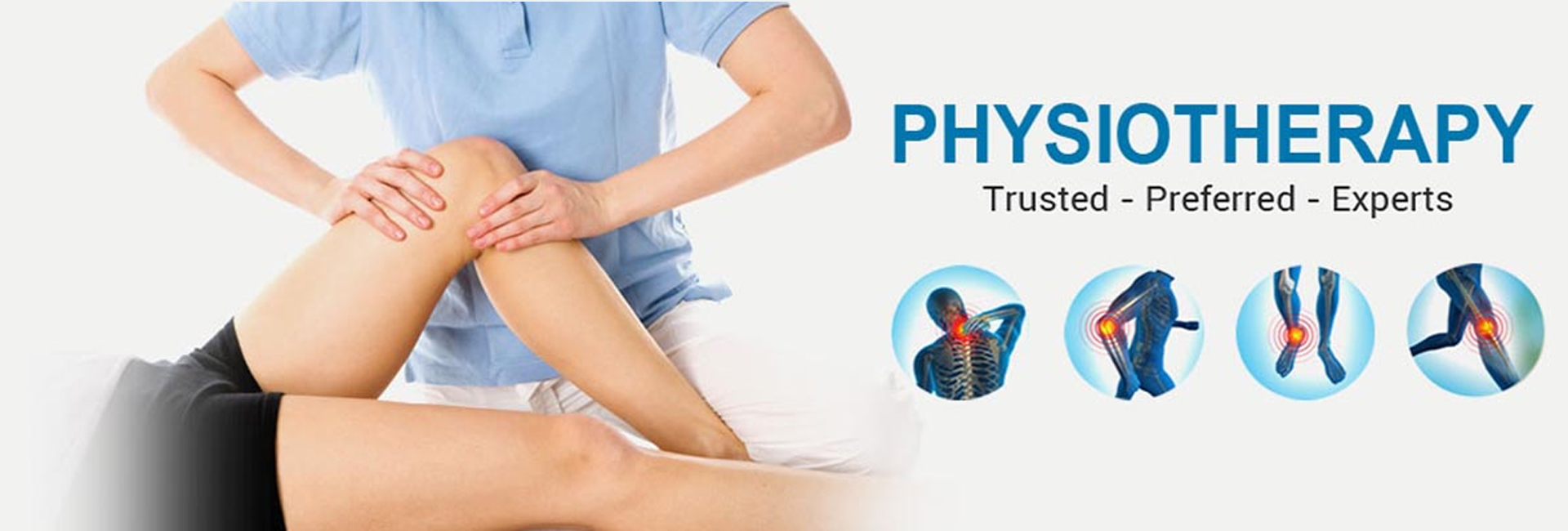
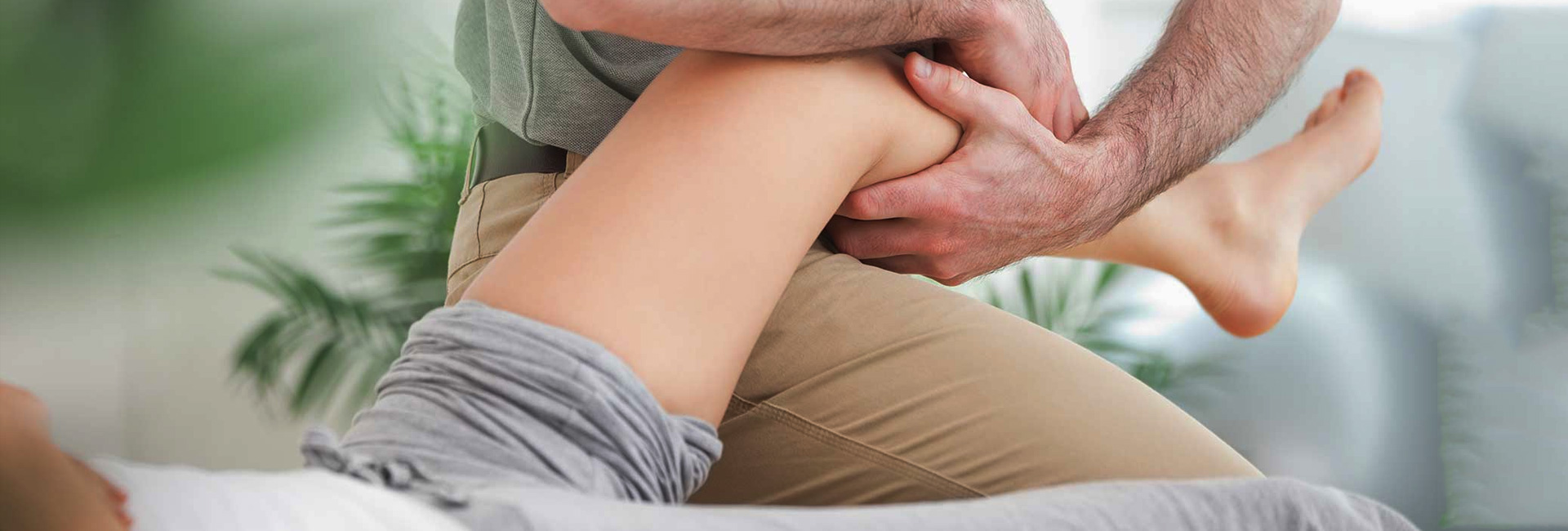
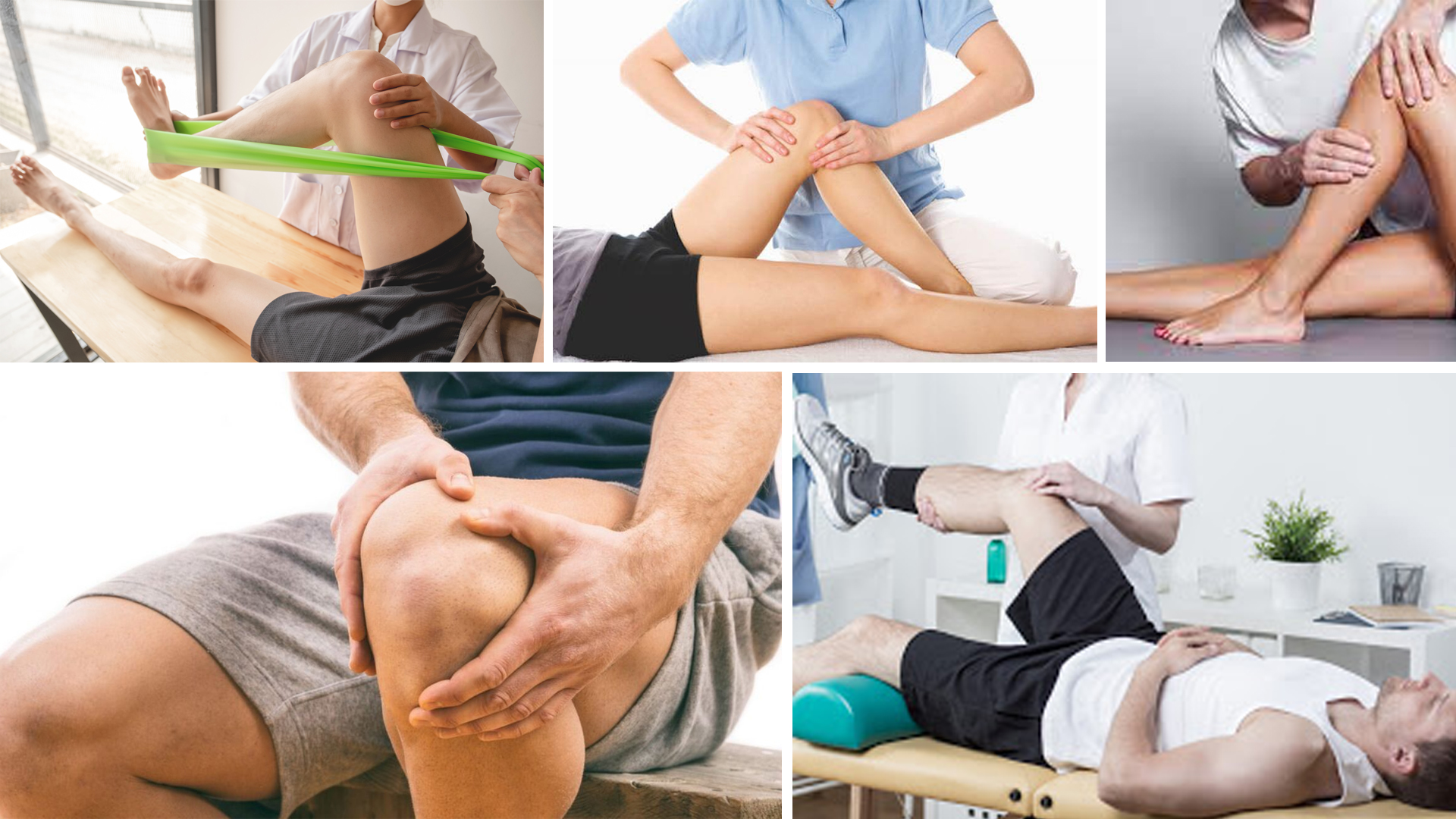
Knee Pain Treatment in Noida
Physiotherapy can be an effective treatment for knee pain, as it aims to improve strength, flexibility, and function in the knee joint. The specific treatment approach will depend on the cause and severity of your knee pain, but here are some common physiotherapy techniques and exercises that may be part of a knee pain treatment plan :
- Assessment : A physiotherapist will first assess your knee to determine the cause of the pain, whether it's due to an injury, overuse, arthritis, or another condition. They will also assess your range of motion, strength, and stability.
- RICE Protocol : Rest, Ice, Compression, and Elevation may be recommended initially to reduce pain and inflammation in the knee.
- Manual Therapy : Hands-on techniques like massage, joint mobilization, and soft tissue manipulation can help reduce pain and improve joint mobility.
- Exercise Prescription : The physiotherapist will design a personalized exercise program to address your specific needs. These exercises may include:
- Range of motion exercises : To improve flexibility and mobility in the knee joint.
- Strengthening exercises : To target the muscles around the knee, including the quadriceps, hamstrings, and calf muscles. Strong muscles can provide better support for the knee joint.
- Balance and proprioception exercises : To improve stability and reduce the risk of falls or re-injury.
- Functional exercises : Activities that mimic real-life movements, helping you regain the ability to perform everyday tasks without pain.
- Modalities : Physiotherapists may use modalities like ultrasound, electrical stimulation, or hot/cold therapy to relieve pain and promote healing.
- Gait Analysis : Analyzing your walking pattern can help identify any biomechanical issues contributing to knee pain. Orthotic devices or adjustments to your footwear may be recommended.
- Taping or Bracing : The use of taping or knee braces can provide support and reduce stress on the knee joint.
- Education : Your physiotherapist will educate you about proper posture, body mechanics, and lifestyle modifications to prevent future knee problems.
- Gradual Return to Activity : If your knee pain is related to sports or specific activities, your physiotherapist will guide you through a gradual return to these activities, taking into account your progress and limitations.
- Home Exercise Program : It's essential to continue with prescribed exercises and self-care at home to maintain the progress made during physiotherapy sessions.
Remember that the success of physiotherapy for knee pain depends on consistency and adherence to the prescribed treatment plan. Always consult with a qualified physiotherapist or healthcare professional for a proper assessment and personalized treatment plan tailored to your specific condition. Additionally, if your knee pain is severe, persistent, or accompanied by other concerning symptoms, seek prompt medical attention.
Doctor's treatment plan for knee pain treatment depends on the cause of knee pain. In normal conditions, one can use cold or ice packs for knee pain physiotherapy treatment in Kaushambi, Vaishali, Vasundhara, Indirapuram, Sanjay Nagar, Vijay Nagar Ghaziabad & Delhi NCR India. The physiotherapy doctor can use anti-inflammatory and pain reducing drugs for knee pain treatment in Ghaziabad. If your knee pain occurs due to arthritis, home remedies may work.
We are having many corporate Clients like | Alternative Tours | Kumbh Mela Tours | Cybertieup | Kumbh Mela Tour Packages | Satya Sales | Kumbh Mela Rang Travels | Vikalp Physiotherapy in Noida to name a few.
BOOK AN APPOINTMENT TODAY
Come to our Physiotherapy clinic, address is A-95, Sector-33, Noida. For a chat with one of our expert physiotherapist to plan the right Physiotherapy treatment for you to get rid of pain in no time.
